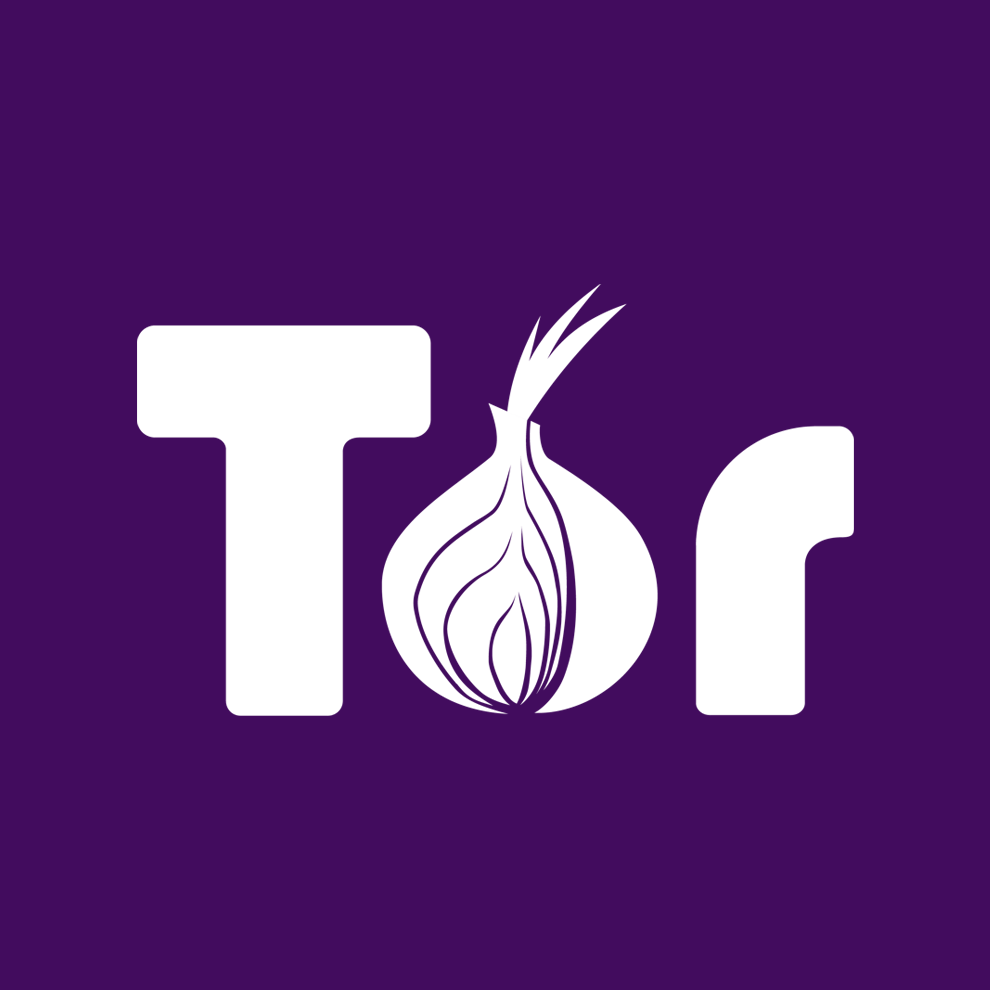

Tools And Techniques To Circumvent Online Censorship
Online censorship is on the rise and even democratic countries are passing sweeping laws that censor the speech of citizens and restrict their access to information. Big Tech companies are also increasingly clamping down on their users’ speech.
Fortunately, there are many tools and techniques you can use to bypass internet restrictions and access the content that governments, tech platforms, and other censors are trying to prevent you from seeing.
This post identifies four main types of online censorship and lists various tools and techniques that will help you bypass each form of censorship.
Types of internet censorship
1. Internet filtering
Internet filtering places restrictions on users’ ability to connect to certain online services by restricting various pieces of internet infrastructure such as:
- Internet Protocol (IP) addresses (addresses that are used to establish connections with online services)
- Domain Name System (DNS) servers (servers that convert domain names into IP addresses so that devices can connect to them)
- Internet service providers (ISPs)
Since internet filtering targets infrastructure, which varies by region, the restrictions are usually geo-based. Therefore, you can usually circumvent internet filtering by making it appear like you’re connecting from a different geographic region.
2. App store censorship
App store censorship involves app stores removing or limiting access to apps, either because they’ve decided that the apps violate their app store rules or because they’re complying with a government censorship order.
App store censorship is most impactful on iPhones and iPads because Apple’s App Store is currently the only way to install apps on these devices. However, there are various ways to minimize the impact of app store censorship, even on Apple devices.
3. Online account censorship
Online account censorship refers to online service providers restricting or shutting down user accounts.
This type of censorship is most prevalent on Big Tech platforms that host user-generated content but it’s becoming increasingly pervasive on other platforms.
Fortunately, there are tools and strategies you can use to minimize the impact of online account censorship.
4. Internet shutdowns
Internet shutdowns are the most extreme form of censorship and unfortunately, there’s no way to fully circumvent them. However, there are steps you can take to reduce their impact and maintain some internet-like functionality when the internet goes down.
Choosing the right circumvention method
When choosing a censorship circumvention tool or technique, you’ll need to consider which type of censorship is being deployed and then choose the best tool or technique for the job.
In some instances, censors will use multiple censorship methods. For example, a censor may remove an app from your country’s app store and use internet filtering to block access to the app’s servers within your country.
If multiple censorship methods are deployed, you’ll need to use a tool or technique for combating both types of censorship at the same time. For example, if an app is removed from your country’s app stores and access to its servers is blocked in the country, you’ll need to use one of the tools to circumvent internet filtering while also using one of the tools or techniques to circumvent app store censorship.
How to circumvent internet filtering
1. Use a VPN
![]() Virtual private networks (VPNs) let you mask your real IP address by routing your traffic through a VPN provider’s global network of servers. If content is being blocked in your country, you can often circumvent the block by switching to a VPN server that’s located in a different country.
Virtual private networks (VPNs) let you mask your real IP address by routing your traffic through a VPN provider’s global network of servers. If content is being blocked in your country, you can often circumvent the block by switching to a VPN server that’s located in a different country.
Some VPNs also have additional censorship circumvention features that can bypass attempts to block VPN traffic.
You can check out some of the top VPN providers here.
2. Use Tor
 The Onion Router (Tor) is a free and open-source service that masks your real IP address by routing your traffic through a network of volunteer-run servers known as “nodes” or “relays.” Like VPNs, Tor can circumvent most geoblocks by routing your traffic through servers in different countries.
The Onion Router (Tor) is a free and open-source service that masks your real IP address by routing your traffic through a network of volunteer-run servers known as “nodes” or “relays.” Like VPNs, Tor can circumvent most geoblocks by routing your traffic through servers in different countries.
The Tor Browser also has several built-in circumvention tools called “pluggable transports” which obfuscate the Tor traffic and make it look like another form of internet traffic (such as a video call or a connection to a Microsoft website). Some of these circumvention tools rely on Tor’s “bridges” feature which lets you connect to non-public Tor relays. Collectively, these features help to bypass blocks on public Tor entry nodes that may be imposed by censors.
Additionally, the Tor Browser lets you access private, censorship-resistant versions of websites called “onion services.” These onion services are much harder to block or take down than regular websites and will often still be accessible when the main version of a website has been censored.
Tor’s decentralized structure also makes it resilient to censorship. Since there are thousands of independent servers in the network and your traffic is routed through multiple servers, it’s difficult for a single entity to impose blocks or restrictions.
There are several ways to access the Tor network and the most optimal way will depend on your use case.
If you just need to use Tor to circumvent the censorship of websites, you can use the Tor Browser.
If you want to route all of your device’s traffic through Tor to bypass other types of censorship (such as the censorship of in-app content), you can:
- Use a VPN that supports Tor connections (this feature is offered by Proton VPN)
- Use Tails (The Amnesic Incognito Live System) on desktop (Tails is a portable, open-source Linux distribution that routes all internet connections through Tor and blocks any apps that attempt to connect to the internet without Tor)
- Use Orbot on mobile (Orbot is an open-source proxy that routes all of your phone’s traffic through Tor)
3. Use Lokinet
![]() Lokinet is a free and open-source service that’s similar to Tor. It hides your real IP address by routing your device’s traffic through a decentralized network of nodes. This allows you to bypass most location-based restrictions.
Lokinet is a free and open-source service that’s similar to Tor. It hides your real IP address by routing your device’s traffic through a decentralized network of nodes. This allows you to bypass most location-based restrictions.
Lokinet also hosts private, censorship-resistant versions of websites called “SNApps.” These sites are only accessible via Lokinet and are similar to Tor onion services. Since SNApps are more resilient to censorship, they’ll usually continue providing access to a website’s content if the main website gets blocked or taken offline.
Due to Lokinet’s decentralized nature and the way it routes traffic through multiple servers located all around the world, it’s very difficult for a single censor to shut down or restrict the network.
Unlike Tor, which has options to route just your browser traffic through Tor or route all of your network traffic through Tor, Lokinet doesn’t have a separate browser and routes all of your network traffic through Lokinet.
One thing to be aware of is that Lokinet is a relatively new project and has fewer nodes than Tor. It also only has apps for Windows, macOS, and Linux, although it says mobile clients are in development.
You can download Lokinet here.
4. Use a Private DNS
![]() Most ISPs use their own DNS servers by default and this gives them the capability to block your access to apps, websites, and other online services at the DNS level.
Most ISPs use their own DNS servers by default and this gives them the capability to block your access to apps, websites, and other online services at the DNS level.
You can circumvent this type of censorship by either using a VPN with first-party DNS servers (all of the VPNs on our top VPNs list use first-party DNS servers) or by changing your default DNS to a private DNS provider, such as NextDNS or Quad9.
While alternative DNS servers aren’t immune to censorship, these providers are less likely to impose restrictions on their users.
5. Use DNSCrypt
![]() Private DNS providers let you bypass most DNS-related internet restrictions. However, DNSCrypt can give you additional protection from this type of censorship by encrypting your DNS requests and preventing third parties from monitoring or tampering with them.
Private DNS providers let you bypass most DNS-related internet restrictions. However, DNSCrypt can give you additional protection from this type of censorship by encrypting your DNS requests and preventing third parties from monitoring or tampering with them.
DNSCrypt is an open specification and there are numerous free and open-source implementations for Windows, macOS, Linux, Android, iOS, and iPadOS available.
You can get more information on DNSCrypt and its implementations here.
Most implementations have supporting documentation that tells you how to configure DNSCrypt to work with your preferred DNS provider and on your preferred OS.
6. Use Lantern
![]() Lantern is an open-source censorship circumvention tool that utilizes a variety of techniques and protocols to bypass internet restrictions. It claims that these techniques and protocols make it better than a VPN at circumventing internet blocks.
Lantern is an open-source censorship circumvention tool that utilizes a variety of techniques and protocols to bypass internet restrictions. It claims that these techniques and protocols make it better than a VPN at circumventing internet blocks.
It also has a “Discover” feature that archives content that has been censored or is at risk of being censored and allows users to anonymously upload content. This archive is censorship-resistant, preserves privacy, and uses peer-to-peer technology so that it can be accessed if the internet goes offline.
Lantern is available on Windows, macOS, Linux, Android, iOS, and iPadOS.
You can get Lantern here.
7. Use Shadowsocks
![]() Shadowsocks is an open-source proxy tool that can bypass internet censorship. It’s known for its ability to disguise internet traffic, making it difficult for censors to detect and block.
Shadowsocks is an open-source proxy tool that can bypass internet censorship. It’s known for its ability to disguise internet traffic, making it difficult for censors to detect and block.
One thing to note when using Shadowsocks is that it’s not designed for privacy and doesn’t provide the same privacy protections as VPNs or Tor.
Another thing to be aware of is that you’ll need both a client and server to run Shadowsocks. Some VPN providers, such as Mullvad VPN, have features that allow you to use Shadowsocks through their VPN clients and servers. Alternatively, you can rent a virtual private server (VPS), and run Shadowsocks on this server, and connect to it with a Shadowsocks client.
You can see Mullvad VPN’s documentation on Shadowsocks here.
You can get more information on how to set up Shadowsocks on a VPS and connect to it with a Shadowsocks client here.
8. Use online services
![]() Online services that open web pages or create a copy of them can sometimes be used to access the content on blocked websites.
Online services that open web pages or create a copy of them can sometimes be used to access the content on blocked websites.
Here are some online services you can use to try to access restricted content:
- Archive.Today (search the archives to see if there are saved versions of the restricted content)
- Wayback Machine (search the archives to see if there are saved versions of the restricted content)
- Cached View (search the Google Web Cache to see if there are cached versions of the restricted content)
- Online website translators (add the URL of the restricted content to an online website translator to see if you can access a translated version of the page)
- RSS readers (add the RSS feed of the restricted content to an RSS reader and see if it’s accessible within the RSS reader)
- Online read later services (save the page to an online read later service and see if it’s accessible within the online read later service)
9. Check for alternate domain names
![]() Some websites that are subject to frequent censorship will create and cycle through new domains to stay ahead of the censors. Websites that utilize multiple domains will often share these domains on social media.
Some websites that are subject to frequent censorship will create and cycle through new domains to stay ahead of the censors. Websites that utilize multiple domains will often share these domains on social media.
Therefore, if the main domain of a website is being censored, check its social media accounts to see if it has alternative domains where you can view the restricted content.
How to circumvent app store censorship
1. Use multiple app store accounts
![]() Apple, Google, and most other Big Tech companies that run app stores let you create multiple accounts and switch between these accounts. If an app has been censored in your country but is available in other countries, you can create a new app store account that’s associated with a country where the app is available and then use this account to access the censored app.
Apple, Google, and most other Big Tech companies that run app stores let you create multiple accounts and switch between these accounts. If an app has been censored in your country but is available in other countries, you can create a new app store account that’s associated with a country where the app is available and then use this account to access the censored app.
This method does have several caveats. First, you’ll need to have a phone number associated with the country you’re creating the account for. Second, Apple only lets you sign in to one account at a time on its devices, so you’ll need to sign out of one account and sign back into another every time you want to access a censored app via this method on Apple devices.
When creating additional app store accounts, make sure you adhere to Apple and Google’s terms of service.
2. Sideload apps (desktop and Android only)
![]() If the censored app is available as a direct download on the developer’s website, you can sideload it (install it directly) on desktop or Android.
If the censored app is available as a direct download on the developer’s website, you can sideload it (install it directly) on desktop or Android.
On desktop, simply download the file, double-click on it once it has been downloaded, and follow the on-screen instructions to complete the installation.
On Android, there are several ways to sideload apps. This post covers these sideloading methods and explains how to find apps to sideload.
3. Use alternative app stores (desktop and Android only)
![]() If an app has been censored in one app store, it may still be available in other app stores on desktop or Android.
If an app has been censored in one app store, it may still be available in other app stores on desktop or Android.
Simply download an alternative app store or browse its catalogue online, search for the censored app, and see if it’s available.
This post covers some of the main alternative Android app stores and how to install them.
4. Compile apps yourself (desktop and Android only)
![]() If a censored app is open-source, you can compile it yourself and install the compiled app on desktop or Android devices.
If a censored app is open-source, you can compile it yourself and install the compiled app on desktop or Android devices.
The process for doing this will vary depending on which operating system (OS) and apps you’re using and compiling for, so you’ll need to find specific instructions to suit your needs.
However, the general process for compiling an app is:
- Install a build tool. (Android Studio is the official build tool for Android apps, Xcode is the official build tool for Mac apps, and Visual Studio is the official build tool for Windows apps. However, there are open-source alternatives to some of these apps.)
- Download the censored app’s source code from a code repository. (GitHub, GitLab, etc.)
- Import the source code into the build tool.
- Build the project and resolve any errors.
- Generate the app file.
- Install the app.
5. Use progressive web apps
![]() Many websites can be saved as progressive web apps (PWAs). These PWAs can be used as an alternative to censored apps.
Many websites can be saved as progressive web apps (PWAs). These PWAs can be used as an alternative to censored apps.
PWAs appear on your home screen, in your app list, and in the OS’s search features, just like regular apps. On some OSs, they have almost all the same functions as regular apps. However, other operating systems, such as iOS and iPadOS, restrict certain functionality, such as notifications.
You can find PWAs by searching for “[app name] PWA” or browsing this PWA directory.
If the censored app doesn’t have a PWA, most browsers will still let you save websites as apps, either natively or with an extension.
The exact process for saving PWAs and saving websites as apps will vary depending on the browser and OS that you’re using. However, the general process is:
- Open the website you want to save.
- Save the website as an app. The option to do this will usually appear in the address bar, share sheet, or settings menu. On Android, the option will be called Install App. On iOS and iPadOS, the option will be called Add to Home Screen. On desktop, the option will either be an install icon or called Create Shortcut or Install [app name].
How to circumvent online account censorship
1. Create multiple accounts
![]() Creating multiple accounts for the main services that you rely on will ensure that you don’t lose access to these services if your main account is censored.
Creating multiple accounts for the main services that you rely on will ensure that you don’t lose access to these services if your main account is censored.
To reduce the likelihood of these secondary accounts being censored, make them anonymous or pseudonymous, and don’t do anything that associates them with your main account. Additionally, make sure you stay in line with the terms of service for each platform when creating these secondary accounts.
2. Back up your data regularly
![]() Backing up important data from your online accounts regularly will ensure that you don’t lose access to this data if the account is restricted or shut down.
Backing up important data from your online accounts regularly will ensure that you don’t lose access to this data if the account is restricted or shut down.
Many online accounts have an option to review and download the data they hold on you. If this option is available, use it to quickly save a copy of your important data.
3. Create a website
![]() Websites are much more resilient to censorship than social media platforms and most hosting providers don’t have the same far-reaching censorship rules as Big Tech.
Websites are much more resilient to censorship than social media platforms and most hosting providers don’t have the same far-reaching censorship rules as Big Tech.
By creating a website and promoting this website regularly on your social media platforms, you can ensure that you still have an online presence if any of your social media accounts are censored.
This tutorial and these videos detail how to create your own website.
4. Build an email list
![]() An email list lets you connect with your followers directly, without being subject to social media platforms’ ever-changing algorithms. It also ensures that you can stay in touch with your followers if any of your social media accounts are restricted or shut down.
An email list lets you connect with your followers directly, without being subject to social media platforms’ ever-changing algorithms. It also ensures that you can stay in touch with your followers if any of your social media accounts are restricted or shut down.
This tutorial details how to set up your own email list.
Once you’ve set up your email list, promote it on your website and social media platforms and communicate with it regularly.
5. Use services that require minimal personal information
 Censors will often use personal information, such as names, email addresses, phone numbers, and IP addresses, to target people and restrict or shut down their accounts.
Censors will often use personal information, such as names, email addresses, phone numbers, and IP addresses, to target people and restrict or shut down their accounts.
By using services that require minimal personal information to use or create an account, you can make it harder for censors to target you in this way.
6. Use free speech and privacy-focused services
![]() Services that have publicly committed to free speech are less likely to censor you and more likely to stand up to censorship pressure from governments.
Services that have publicly committed to free speech are less likely to censor you and more likely to stand up to censorship pressure from governments.
Likewise, services that have committed to privacy are less likely to censor you or bow to government pressure because they’re not snooping on your posts and using their contents as justification for censorship.
Here are some free speech and privacy-focused services you can try:
- Free speech-friendly social networks
- Free speech friendly video sharing platforms
- Free speech-friendly Discord alternatives
- Private messaging apps
- Private email providers
- Private and encrypted cloud storage providers
- Private search engines
How to circumvent internet shutdowns
1. Save offline backups
![]() By saving offline backups of the apps, websites, and data you need, you can ensure that you have access to them if the internet goes down.
By saving offline backups of the apps, websites, and data you need, you can ensure that you have access to them if the internet goes down.
While you won’t be able to utilize in-app features that require an internet connection if the internet is shut down, these backups will still give you access to lots of valuable offline data.
In addition to backing up your main apps, consider saving some of the portable apps that you may need to USB sticks or external hard drives.
Portable apps are apps that can run directly from an external drive. If you have portable apps saved in advance, then you can still access these apps from any desktop device when the internet goes down by plugging in the USB stick or hard drive.
You can get over 400 portable apps from PortableApps.com.
You can get Tails (the portable, open-source Linux distribution that was covered in the “Use Tor” section of this post) here.
2. Set up a personal server
![]() Personal servers let you store lots of important data, such as your files, photos, messages, and contacts, locally. Not only are they a great way to reclaim your data from Big Tech but they allow you to always have access to a local copy of your data, even when the internet goes down.
Personal servers let you store lots of important data, such as your files, photos, messages, and contacts, locally. Not only are they a great way to reclaim your data from Big Tech but they allow you to always have access to a local copy of your data, even when the internet goes down.
There are several personal server options, such as Umbrel and Nextcloud.
You can also use these open-source Plex alternatives to set up your own media server that allows you to access your movies, TV shows, music, and other personal media without an internet connection.
3. Use offline and peer-to-peer apps and services
![]() Offline apps and services give you access to a wide range of information locally without requiring an internet connection. Peer-to-peer apps allow you to share information and communicate with others when you don’t have access to the internet.
Offline apps and services give you access to a wide range of information locally without requiring an internet connection. Peer-to-peer apps allow you to share information and communicate with others when you don’t have access to the internet.
Both types of apps can be invaluable when you’re cut off from the internet but you’ll need to download them in advance of an internet shutdown.
The types of offline and peer-to-peer apps you should consider downloading will depend on your requirements. However, some types of apps you may want to consider include:
- Offline mapping apps: These apps allow you to navigate without an internet connection. OsmAnd and Organic Maps are two open-source, offline mapping apps that work on mobile while QGIS is an open-source desktop mapping app.
- Offline content readers: These apps let you save offline versions of educational content repositories such as Wikipedia and Project Gutenberg, access them on all devices, and search them with full-text search. The open-source app Kiwix is one of the most popular apps in this category.
- Offline generative pre-trained transformer (GPT) models: These models are trained on vast amounts of data and can answer many of the questions that you’d usually rely on a search engine for when you don’t have access to the internet. There are lots of models available but you can search GitHub, GitLab, or Hugging Face, or ask Hugging Chat (Hugging Face’s open-source chatbot) to find something suitable for your needs.
- Peer-to-peer messaging apps: These apps use various techniques to let you communicate with others when the internet is shut down. One of the most popular open-source, peer-to-peer messaging apps is Briar.
Privacy considerations when circumventing online censorship
Authorities that impose censorship will often monitor and punish those who engage in censorship circumvention so you also need to take precautions and make your censorship circumvention activities as private as possible.
Here are some tips you can use to stay private when bypassing censorship:
1. Separate your censorship circumvention activities and your real identity
![]() To minimize the chances of your censorship circumvention activities being tied to your real identity, do everything you can to separate these activities from your real identity.
To minimize the chances of your censorship circumvention activities being tied to your real identity, do everything you can to separate these activities from your real identity.
For maximum separation, get separate devices for your censorship circumvention activities. Purchase them with cash or another payment method that’s not tied to your identity.
Once you have these devices, use them exclusively for bypassing censorship, and don’t do anything associated with your real identity on these devices. Likewise, don’t do anything associated with censorship circumvention on your other devices. For example, don’t use your anonymous accounts on devices that are linked to your real identity.
If getting separate devices isn’t practical, try to maintain this separation via different profiles and accounts on your devices. Create new accounts and profiles that will be used exclusively for censorship circumvention and then don’t discuss or reference these accounts when you’re using profiles or accounts that are linked to your real identity.
If you need to submit personal information, such as an email address or phone number, when creating new accounts, use email addresses and phone numbers that aren’t associated with your real identity.
You can get more tips for anonymizing and compartmentalizing your online activity here.
2. Use a private OS
![]() Windows, macOS, most versions of Android, iOS, and iPadOS are tied to a user account and send telemetry back to the tech giants that provide them. By using an OS that doesn’t require a user account, you can stop most of this telemetry and get a huge privacy boost.
Windows, macOS, most versions of Android, iOS, and iPadOS are tied to a user account and send telemetry back to the tech giants that provide them. By using an OS that doesn’t require a user account, you can stop most of this telemetry and get a huge privacy boost.
On desktop, Linux is a private, open-source alternative to Windows and macOS that doesn’t require a user account. There are plenty of Linux distributions to choose from but Ubuntu is a popular and easy-to-use distribution for beginners. If you want your activity to be wiped after each session, Tails (the portable, open-source Linux distribution that was covered in the Use Tails section of this post) is another option.
On mobile, there are several open-source, de-Googled Android distributions that remove the requirement to sign in with a Google account, strip many of the Google services from the OS, and add new privacy features. They include GrapheneOS, CalyxOS, and LineageOS.
3. Use a private browser
![]() Google Chrome, the world’s most popular browser, is a privacy nightmare that uses browser history to target users with ads. Most users also sign in when using Chrome and this allows Google to collect their browsing history. Additionally, some other popular browsers have similar privacy concerns.
Google Chrome, the world’s most popular browser, is a privacy nightmare that uses browser history to target users with ads. Most users also sign in when using Chrome and this allows Google to collect their browsing history. Additionally, some other popular browsers have similar privacy concerns.
To minimize data collection and privacy issues when browsing, choose a browser that doesn’t require you to sign in and has built-in privacy features.
You can check out some private browsers here.
4. Block ads
![]() Online ad tech companies are becoming increasingly adept at tracking our activities around the web and often share the data they collect with numerous third parties. By blocking ads, you can minimize the amount of data collected and shared by these companies.
Online ad tech companies are becoming increasingly adept at tracking our activities around the web and often share the data they collect with numerous third parties. By blocking ads, you can minimize the amount of data collected and shared by these companies.
There are several ways to block ads which include:
- Blocking ads via DNS (Next DNS and all of the VPNs on our top VPNs list block ads via DNS)
- Using a private browser with built-in ad-blocking features (many of the private browsers on this list have built-in ad-blocking features)
- Using an ad-blocking extension (UBlock Origin is a popular, open-source ad-blocking extension on desktop and Firefox for Android while 1Blocker is a popular ad-blocking extension for Safari on iOS, iPadOS, and macOS)
- Using a private OS (reducing the telemetry limits the amount of data that can be collected and used for ad targeting)
5. Boost your WiFi privacy
![]() Your router and your other internet-connected devices can potentially expose your location and other sensitive data to third parties via their WiFi features.
Your router and your other internet-connected devices can potentially expose your location and other sensitive data to third parties via their WiFi features.
Fortunately, there are several steps you can take to bolster your WiFi privacy and limit the amount of data that’s leaked via WiFi features.
This post details how to protect yourself from WiFi data leaks.
6. Limit location tracking
![]() Even if you turn off location services, there are numerous ways that computers and phones can track your location and expose it to third parties.
Even if you turn off location services, there are numerous ways that computers and phones can track your location and expose it to third parties.
However, there are ways to protect yourself from most of the common forms of location tracking that third parties deploy.
This post details how to limit location tracking.
7. Secure your router
![]() Your router is one of the most important internet connected devices in your home because it manages the web traffic for all of the phones, laptops, tablets, consoles, smart TVs and other devices. If it’s poorly configured, bad actors can take advantage of vulnerabilities in your router and snoop on internet traffic.
Your router is one of the most important internet connected devices in your home because it manages the web traffic for all of the phones, laptops, tablets, consoles, smart TVs and other devices. If it’s poorly configured, bad actors can take advantage of vulnerabilities in your router and snoop on internet traffic.
Fortunately, upgrading the security of your router is relatively simple.
This post details the steps you should take to secure your router.
8. Use private payment options
![]() Debit cards, credit cards, PayPal, and other popular online payment services tie your purchases to your identity. Therefore, if you need to buy something related to your censorship circumvention activities, use a private payment option that’s not linked to your identity if possible.
Debit cards, credit cards, PayPal, and other popular online payment services tie your purchases to your identity. Therefore, if you need to buy something related to your censorship circumvention activities, use a private payment option that’s not linked to your identity if possible.
Some of the private payment options you can try include:
- Cash
- Pre-paid debit cards purchased with cash
- Gift cards purchased with cash
- Privacy-focused cryptocurrencies
Start building your censorship circumvention toolkit today
While these tools and techniques are a great way to fight back against censorship, accessing them after a censorship technique has been deployed can be difficult. Therefore, it’s best to start getting prepared now so that you’re not caught off guard by sudden or unexpected censorship.
Go through each of the tools, techniques, and privacy considerations in this post, download everything you may need, and take as many preparatory steps as you can so that your censorship circumvention toolkit is ready when you need it.




